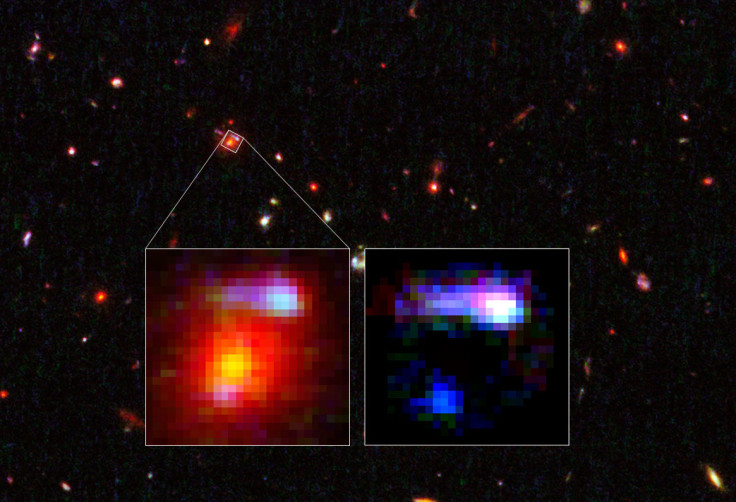Nasa Discovers Giant 'Cosmic Magnifying Glass' Galaxy as Most Distant Object Known to Science

Nasa astronomers have found the most distant "lensing" galaxy in the history of science, so large that it acts as a "cosmic magnifying glass".
It is so distant that Nasa's images show the galaxy as it looked 9.6 billion years ago, and it is large enough to magnify an even more distant galaxy 10.7 billion light-years away with a phenomenon called gravitational lensing.
A gravitational lens refers to a distribution of matter, such as cluster of galaxies, between an observer and a distant source, that is able to bend, warp and magnify the light from more distant objects.
Called gravitational lensing, the effect reveals distant galaxies that astronomers otherwise would not be able to see. It is one of the predictions of Einstein's general theory of relativity.
The newly-discovered galaxy which is 180 billion times larger than our sun, was spotted by scientists from the Keck Observatory in Hawaii and the Hubble Space Telescope and belongs to a cluster known as IRC 0218.
It breaks the previous record-holder for most distant lensing galaxy by 200 million years, according to Nasa.
Lead researcher Kim-Vy Tran, of Texas A&M University, said finding a galaxy big enough to act as a lens is rare, as reported by Space.com.
He used an analogy of looking through a magnifying glass to explain: "When you look more than nine billion years ago in the early universe, you don't expect to find this type of galaxy lensing at all.
"It's very difficult to see an alignment between two galaxies in the early universe. Imagine holding a magnifying glass close to you and then moving it much farther away. When you look through a magnifying glass held at arm's length, the chances that you will see an enlarged object are high.
"But if you move the magnifying glass across the room, your chances of seeing the magnifying glass nearly perfectly aligned with another object beyond it diminishes."
Researcher Kenneth Wong told Sky News: "There are hundreds of lens galaxies that we know about, but almost all of them are relatively nearby, in cosmic terms. To find a lens as far away as this one is a very special discovery because we can learn about the dark-matter content of galaxies in the distant past."
"By comparing our analysis of this lens galaxy to the more nearby lenses, we can start to understand how that dark-matter content has evolved over time," he added.
Nasa has hopes to use the Hubble telescope alongside its successor, the James Webb Space Telescope.
John Grunsfeld, Nasa's director of space science operations who helped service the telescope during a visit in 2009, told CBS News: "If we can keep Hubble going through 2020, with an October 2018 James Webb Space Telescope launch, the scientific opportunity is tremendous. Now we can't guarantee that. It's space, it's really hard. Knock on wood, we can keep Hubble going a long time."
© Copyright IBTimes 2025. All rights reserved.






















